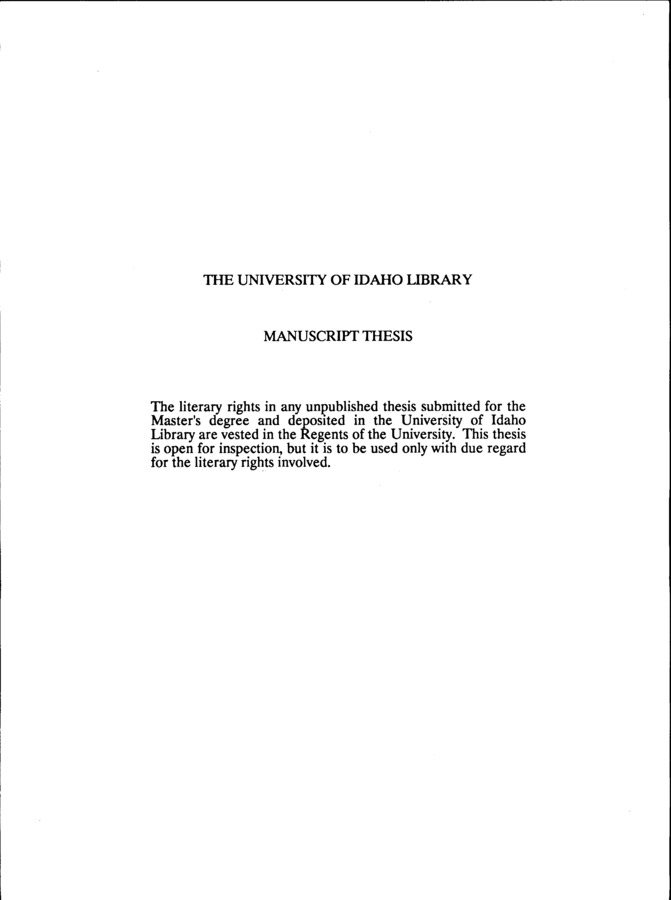PDF
Relationships between recharge, sediment chemistry, and groundwater quality beneath the Smelterville Flats portion of the Bunker Hill Superfund Site Item Info
- Title:
- Relationships between recharge, sediment chemistry, and groundwater quality beneath the Smelterville Flats portion of the Bunker Hill Superfund Site
- Authors:
- Swanson, Jeffrey D.
- Contributors:
- Idaho Water Resources Research Institute; IWRRI
- Date:
- 1992-08
- Description:
- Periodic spatial and temporal heterogeneities in groundwater quality have been observed in samples collected from piezometers located in the 40-acre tract of Smelterville Flats administered by the u.s. Bureau of Land Management (BLM). Smelterville Flats lies within the Bunker Hill Superfund Site which is located along the South Fork of the Coeur d'Alene River in northern Idaho. The Flats have been the repository of over 100 years of uncontrolled mine waste dumping. These mine wastes degrade the shallow groundwater and are being studied to evaluate possible mitigative measures. Natural recharge events such as spring snowmelt or locally intense rainstorms are observed to influence temporal fluctuations in groundwater quality and groundwater levels observed at the BLM site. These recharge events must be considered in light of the metals content of the mine waste, the local fluvial sediment stratigraphy, and the local infiltration history. These factors control the residence time of any particular pulse of infiltrating moisture within the mine wastes and governs the impact of this infiltration on groundwater quality and groundwater levels. Three months of artificial recharge conducted on the BLM site made no observable impact on measured groundwater levels or groundwater chemistry. The spatial patterns of groundwater quality in this study area are controlled by the geology, hydraulic conductivity, and metals content of mine waste in the neighborhood of the piezometer, as well as the local sedimentary stratigraphy. Poor quality shallow groundwater samples can be associated with flotation slimes containing relatively high amounts of metals and having a relatively low hydraulic conductivity. The mine wastes can be separated physically, statistically, and geochemically into jig tailings and flotation slimes. The jig tailings are oxidized in appearance, sandy, and typically contain about one-half the zinc content of the flotation slimes. The flotation slimes appear black to dark gray, and are composed of silt to clay sized particles. The spatial distribution of the mine wastes within the BLM portion of Smelterville Flats is controlled by fluvial and lacustrine depositional environments, by the morphology of the pre-mining fluvial plain, by the production histories of the mine and mill wastes, and by subsequent surficial weathering and fluvial reworking. Consideration of the impact of natural recharge events should be included in the design of extractive mitigative efforts at Smelterville Flats. Intense rainstorms or rapid snowmelt events commonly occur at Smelterville Flats. Dilution of in situ flow cells or flooding of process ponds could result in poor performance or unplanned excursions of process materials into the environment.
- Subjects:
- mine wastes water quality groundwater pollution groundwater recharge
- Location:
- Coeur d'Alene Basin
- Idaho County:
- Shoshone County; Kootenai County
- Latitude:
- 47.52
- Longitude:
- -116.56
- Collection:
- Coeur d'Alene Basin
- Source:
- University of Idaho
- Publisher:
- University of Idaho
- Contributing Institution:
- University of Idaho
- Type:
- Text
- Format:
- application/pdf
- Cataloger:
- wbv
- Date Digitized:
- 2012
- Language:
- eng
Source
- Preferred Citation:
- "Relationships between recharge, sediment chemistry, and groundwater quality beneath the Smelterville Flats portion of the Bunker Hill Superfund Site", Idaho Waters Digital Library, University of Idaho Library Digital Collections, https://www.lib.uidaho.edu/digital/iwdl/items/iwdl-cda_swanson_1992.html
Rights
- Rights:
- In copyright, educational use permitted. Educational use includes non-commercial reproduction of text and images in materials for teaching and research purposes. For other contexts beyond fair use, including digital reproduction, please contact the University of Idaho Library Special Collections and Archives Department at libspec@uidaho.edu. The University of Idaho Library is not liable for any violations of the law by users.
- Standardized Rights:
- http://rightsstatements.org/vocab/InC-EDU/1.0/

